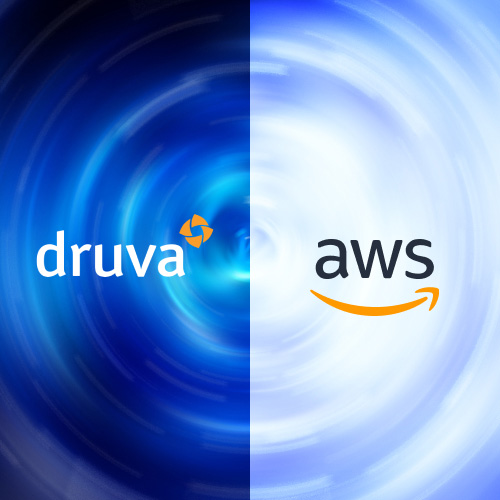Achieving cost savings when you migrate to the cloud
The cloud is more economical than on-premises. AWS has continued to cut cloud storage costs, year over year, and with services like Amazon S3 Glacier Deep Archive customers can keep compliance copies of data but at a cost comparable to tape. This makes long-term data retention in the cloud a viable alternative and with Druva’s automated tiered storage from Amazon S3 to Amazon S3 Glacier Deep Archive, takes the burden of managing data across hot and cold storage out of the equation, passing on those cost savings to the customer.
For example, by unifying their remote site backup with Druva and taking advantage of Druva’s cost efficiencies, Pall Corporation was able to save a total of 78% on their budget and while reducing labor-related costs by 95%.
Ensuring security in the cloud
AWS infrastructure provides 99.99999999% durability and self-healing storage, and certifications such as FedRAMP validation and GovCloud (US) enable even the most restrictive government organizations to implement a cloud operating model while knowing that their data is safe and secure in the cloud.
Because Druva is built on this secure architecture as the foundation of our backup and recovery services, customers can apply the world’s best security posture to data management: NCI (National Cancer Institute) uses Druva for data protection because we can meet the stringent federal regulations and compliance requirements, including FIPS 140-2, NIST 800-53, FedRAMP, FISMA, HIPAA and SOC-2.
We’re not only well-architected from a regulatory perspective. Druva’s enterprise-grade security for data both in-flight (TLS) and at rest (AES-256) keeps data safe and secure while ensuring that only customer-authorized users have access to data.
How to get started migrating workloads to the cloud when you have large datasets or low bandwidth
Once a customer decides to move to the cloud, they might need help to get their data to the cloud – which is not a simple problem when there are large amounts of data to be seeded in AWS, limited bandwidth, or a combination of the two. They also might need help restoring their data in the case that they’d need to restore a large amount of data back to their data center to recover their application.
This is where the AWS Snowball family comes in, especially AWS Snowball Edge. As AWS continues to improve compute, storage optimization, performance, and simpler management with cleaner UI, it has become increasingly easier for customers to migrate massive amounts of data to the cloud.
Druva was an early adopter of AWS Snowball Edge. It’s shipped directly from AWS and is preconfigured with Druva data management technology. You simply power it on, connect to the network, and start backing your data up to the AWS Snowball Edge. You then ship the device back to AWS with a prepaid shipping label, and the data will be loaded into Druva’s Cloud. Easy!
By pre-configuring AWS Snowball Edge with Druva data management technology, Druva and AWS are working together to help organizations move and protect their workloads in the cloud — and bring large amounts of data back from the cloud. This is a totally secure option to ship any amount of data – up to many petabytes – to AWS for seeding with no additional cost.
DRaaS & recovery performance is better from the cloud
We recently published some testing results when looking at recovery performance from the cloud. Well, Druva has a proven RPO (recovery point objective) of 1 hour and RTO (recovery time objective) of minutes.
Here’s just one example of a customer who improved their recovery performance with Druva: Policy Services, a financial advising firm, achieved a 95% faster time to restore emails and inboxes for Office 365 compared to their previous archival solution. Don’t believe that number? Here’s what Lewis Barbour, Head of IT for Policy Services, had to say:
“Druva sits in the background backing everything up twice a day for our email inboxes and none of the users notice any impact. It’s fair to say that Druva is exceeding our RTO and RPO goals.”
Protecting the workloads of today AND tomorrow
New services and applications like AWS Outposts and Kubernetes are changing the landscape for how data is managed. AWS Outposts allows customers to continue running applications on-premises with AWS managed infrastructure. Then, when a customer decides they are ready to move to the cloud, AWS provides the mechanisms to help them quickly move data to the cloud.
With this, customers no longer need to decide if they want the simplicity and flexibility of cloud or the low latency access of running applications on-premises. With AWS Outposts, customers can run their applications locally within their data center, but get the benefits of simple management and a cloud infrastructure, eliminating the need to deploy, patch, and maintain hardware that you otherwise would be managing with traditional on-premises servers.
Yet again with this innovative solution for customers, Druva also was one of the first AWS partners to test and validate their solution with AWS Outposts — enabling customers to protect and leverage their AWS Outposts infrastructure while fully capitalizing on those cloud benefits of zero hardware, zero maintenance, zero patching, etc.
With all of these benefits and such a tightly knit partnership… I’m excited to see what’s next.
Speaking of what’s next, Druva’s recent announcement of protecting Kubernetes highlights our dedication to continuing to innovate alongside AWS to make sure that no matter where our customers’ data lives, it is always available and always protected.
Wrapping up
Druva and AWS are working together to solve customer problems, whether they’re on-premises or in the cloud, with familiar, consistent, integrated, simple, and future-proofed solutions. To learn more about what we’re doing together, join us at DxP, The cloud data protection summit 2020. We look forward to seeing you there.
